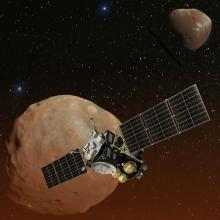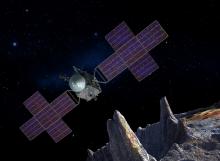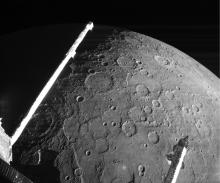Listen to today's episode of StarDate on the web the same day it airs in high-quality streaming audio without any extra ads or announcements. Choose a $8 one-month pass, or listen every day for a year for just $30.
You are here
Moon and Venus
It’s been a quarter-century since the end of the last American mission to the planet Venus. And there probably won’t be a new one for at least a decade or so — NASA has turned down several proposals for new craft to study our neighboring world.
But there’s still a lot to learn about Venus. And one of the most interesting questions is what the planet was like when it was young.
Today, Venus is a volcanic wasteland. Its atmosphere is dense and toxic, with temperatures soaring close to 900 degrees Fahrenheit. And the atmosphere is topped by clouds of sulfuric acid.
The early Venus, though, might have been much more hospitable. In fact, there’s evidence that it might once have been covered by liquid water — perhaps enough to form a global ocean. That wetter, cooler era could have lasted as long as two billion years.
After that, though, the water vanished. Venus got hotter, so the oceans boiled into the atmosphere. That trapped more heat, eventually helping to create the hellish environment on the present-day planet.
Finding out more about Venus’s history will require more trips to the planet, with landers that are capable of operating for months or years — something that’s extremely tough to do on this intriguing world.
For now, look for Venus in the west beginning shortly after sunset this evening, to the right of the crescent Moon. Venus is the brilliant “evening star,” so you can’t miss it.
Script by Damond Benningfield





